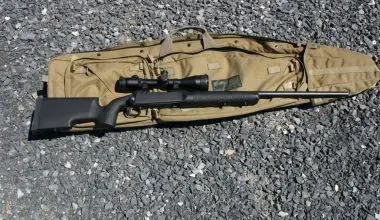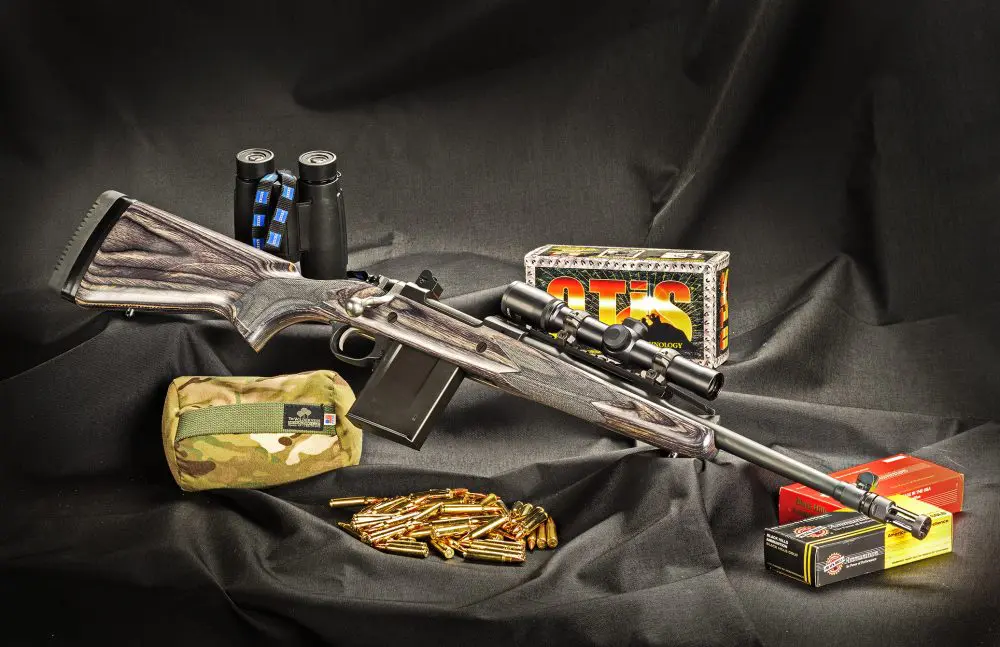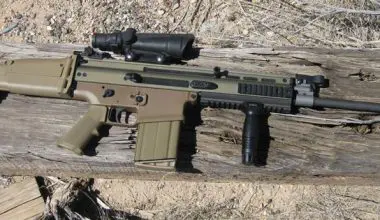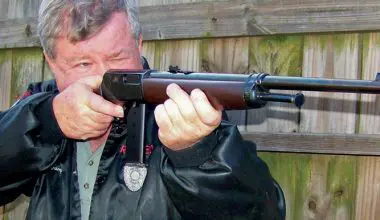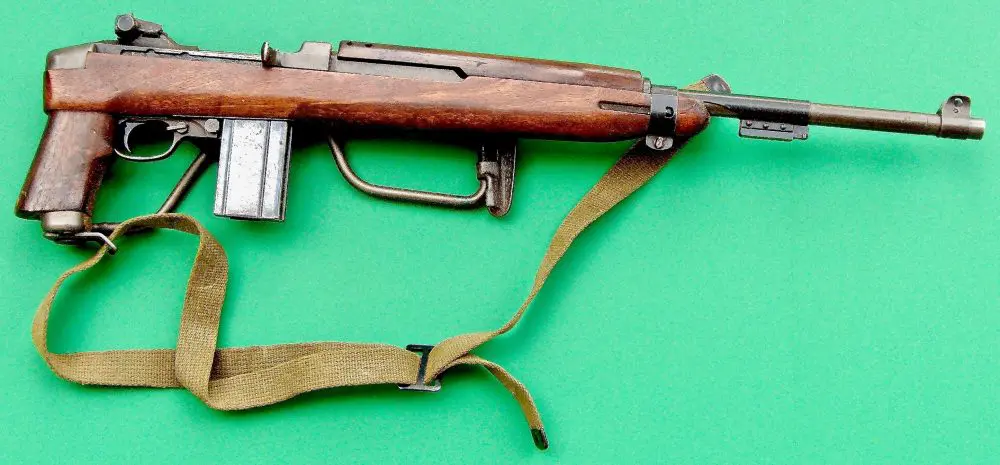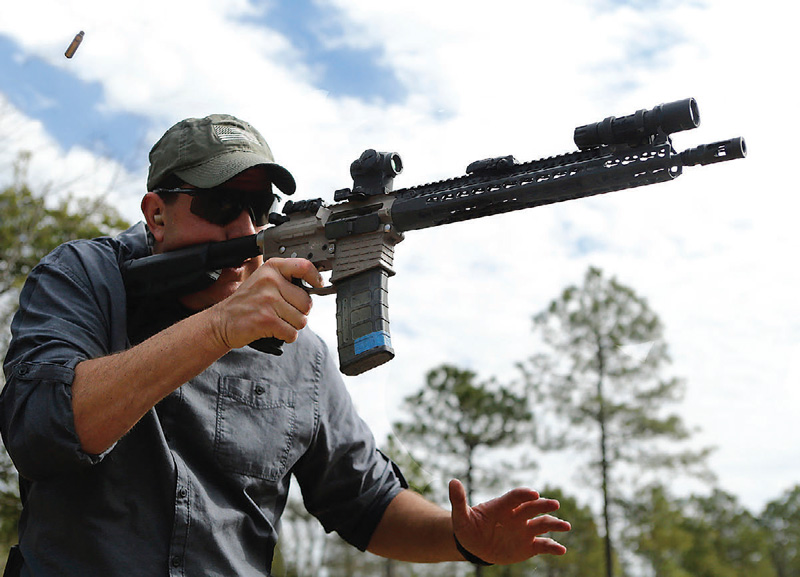
THE average modern rifle is similar to the average modern shooter—it could stand to lose a few pounds. Our forefathers put meat on the table and fought battles with rifles that were longer, larger caliber, and often lighter than what many of us are lugging around today. Let’s take a look at how we got here and see if a little careful thought can help adjust course.
If you pick up an Indian Wars-era Trapdoor Springfield or an 1896 Krag Carbine that Ted’s Rough Riders would have carried up the hill in Cuba, the first thing that strikes you is how light and balanced they are.
Service rifles started to fatten up a little with the 1903 Springfield, as doctrine emphasized precision long-range fire from prone, and the powerful .30-06 benefited from extra steel and wood. The additional weight helped steady the rifle, soak up some recoil, and add a measure of durability to a weapon that was still thought of as a bayonet extender and club in close quarters. Depending on the exact hunk of wood on the gun, weight ran to about 8.7 pounds.
The M1 Garand added a little more beef and dressed out around ten pounds.
The original AR-15 and M16 answered decades of complaints from soldiers and were relative lightweights at 7.9 pounds with 30 rounds.
But when the Vietnam War ended and the M16 became the true standard, it ran headfirst into training and marksmanship programs that were firmly rooted in the long-range, prone 1903 Springfield era. This led to substantial weight gain in the M16A2 series to boost the rifle’s performance at the long lines.
Table of Contents
OUNCES MAKE POUNDS
About the time of the great blossoming of the AR platform in early Operation Iraqi Freedom, rifles began to accumulate “stuff.” Entire classes of accessories emerged. Lights, lasers, optics, bipods, and on and on.
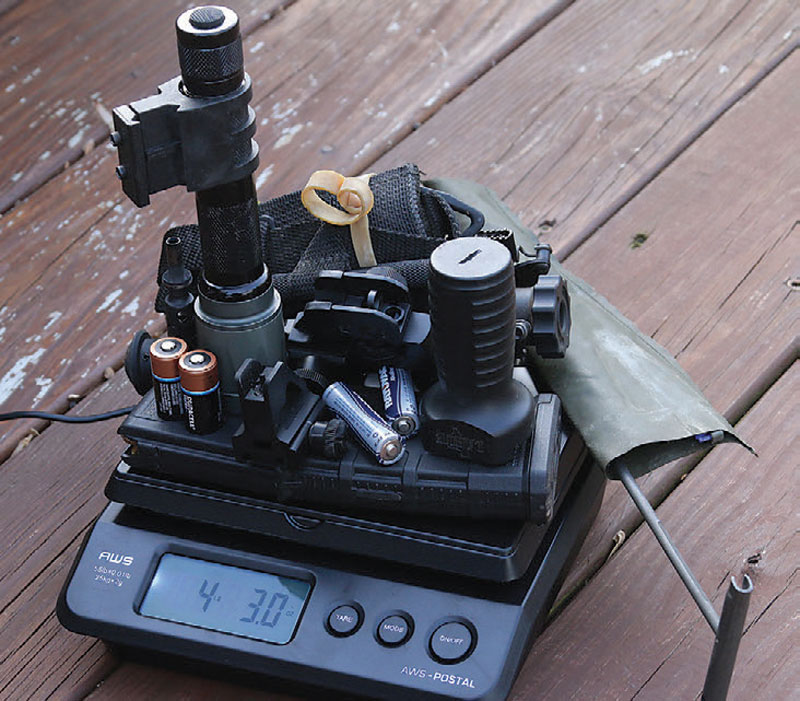
Many of these were unbelievably useful and added substantially to the weapon’s capability in certain missions. However, a “just in case” mindset began to flourish as well:
I might need a bipod … so bolt one on.
I might run out of batteries for this or that … ah ha! This has a nifty compartment. I’ll stuff some AAs in there.
I heard somewhere that M4s break bolts. I’ll shove an extra in this pistol grip, next to my….
You get the idea. Rifles and carbines started to accumulate more junk than a spare kitchen drawer.
I recently made a small pile of some of the stuff I’ve heard people put on their rifle. This wasn’t an all-inclusive list, but it had most of the usual suspects: cleaning rods, batteries, spare bolts, bipods, foregrips, white light, tourniquet, spare magazine, et al. I ran out of space on my scale’s tray before running out of items I’ve seen or heard attached to the gun.
The gravitational pull of the junk pile was over four pounds! There is probably a valid argument for each of the items in some (or even many) scenarios, but an item needs careful scrutiny before it gets a home on the gun.
I carried batteries in my pistol grip for a couple of night ambushes when we had just fielded a new laser and I was paranoid it would eat the suspect batteries we had. It made sense at the time, but since then I’ve established a healthy respect for the battery life of most optics and found it more practical to carry batteries in my gear. This is the basic approach I have with most “stuff”—it needs to be handy but is probably more easily carried on me than on my weapon.
Only two items still consistently make it onto one of my carbines. The first is a small vial or sample pack of lubricant that fits easily in a grip compartment. There is almost no weight penalty and, while I’ve not yet needed it, I am more comfortable having it onboard than trying to locate one on me or somewhere in my ruck. It may be a quirk, and I am not recommending it as much as admitting it.
The second is conditional: If I have on the gun accessories or mounts that take a proprietary wrench or key, I like to have one on the gun. For example, most of BCM’s KeyMod accessories tighten with a T15 Torx. If everything is standard screws, then the multi-tool on my gear or in the range bag is fine. When multiple mounts are involved, the Patriot Products Combat Optic Tool makes a lot of sense.
BIG BONED OR JUST DEAD WEIGHT?
Probably five dozen choices are available to the shooter for literally each major component of the rifle. Those choices don’t just form a spectrum of cost and quality. In each component, there is also a substantial weight difference between lightest and heaviest. The photos on page 82 show a great example.
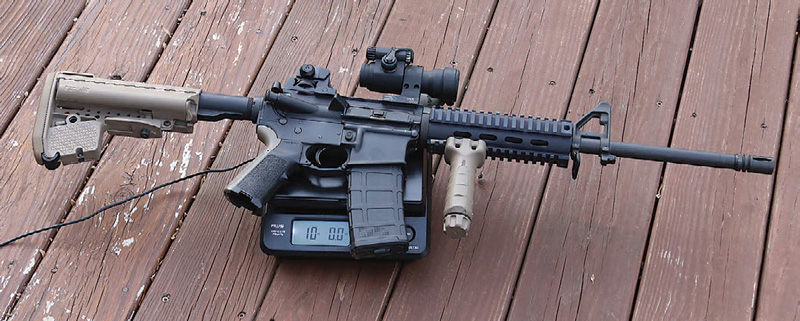
The carbine with the short quad rail and tan stock weighs a full ten pounds loaded, but with no white light. The VLTOR stock, barrel, Aimpoint, and rail are all on the heavy side of available options.
Meanwhile, the ROBAR PolymAR-15L (POLYMER PRECISION: ROBAR PolymAR-15, April 2015 S.W.A.T.) has an optic, a SureFire light, 13-inch BCM KMR rail, and is a full three pounds lighter fully loaded at 6.9 pounds.
A rifle that starts light can add a 20+ ounce variable-power optic and/or a laser and still be quite manageable. A rifle that starts heavy and adds glass, laser or accessories just becomes far less manageable and hard to shoot well unless supported.
Shooters who like a heavy barrel choose from the lighter handguards to keep a neutral or slight forward balance. Shooters who like the weight to sit more toward them gravitate to the heavier stock options. I prefer as light as possible and a neutral balance.
MYTH 1: WEIGHT HELPS YOU SHOOT BETTER
Pishtosh. The top professional 3-gun competitors have trended strongly toward lighter rifles as the courses of fire have shifted to a balance of close and deep targets and dynamic scenarios. This is because when the shot is what it is and there is neither time nor opportunity to gain bone support or terra firma, a lighter rifle is easier to steady by muscle support.
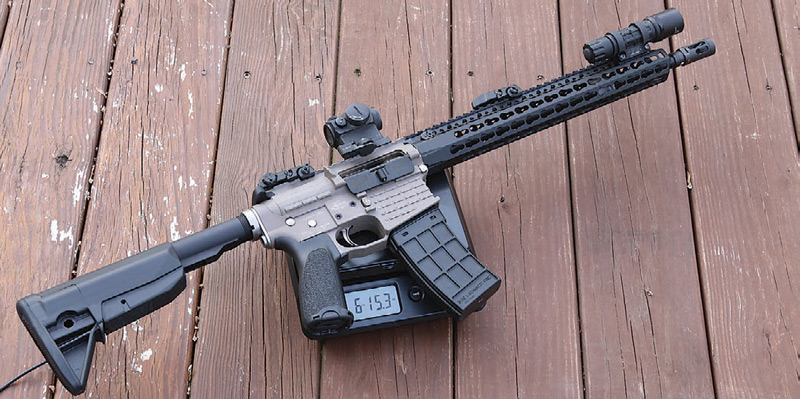
When a shooter is laid out on the ground and well supported by bone, bipod, rest, or loop sling, weight is good. As the distance from the deck increases and the available time for the shot decreases, weight cuts increasingly against the shooter.
There is a balance of ideal weight that depends on the shooter’s strength, skill, and other factors such as the weight of the trigger and overall balance and fit of the rifle. As a reference, I offer that I shoot really well with carbines that shoulder at about seven to eight pounds fully dressed and loaded. I see a slight degradation on the super lightweights at six pounds, but can still shoot them well. They just may not stabilize quite as much.
For every quarter pound over 8.5 pounds, there is a corresponding down tick in how well I can run it hind legged. Beyond ten pounds, performance drops off sharply. This is speaking to predominantly snap shots and multiples/follow-ups rather than slow-fire, low-pressure shots where if the rifle is too heavy, you break it down, take a breath, and restart the sequence.
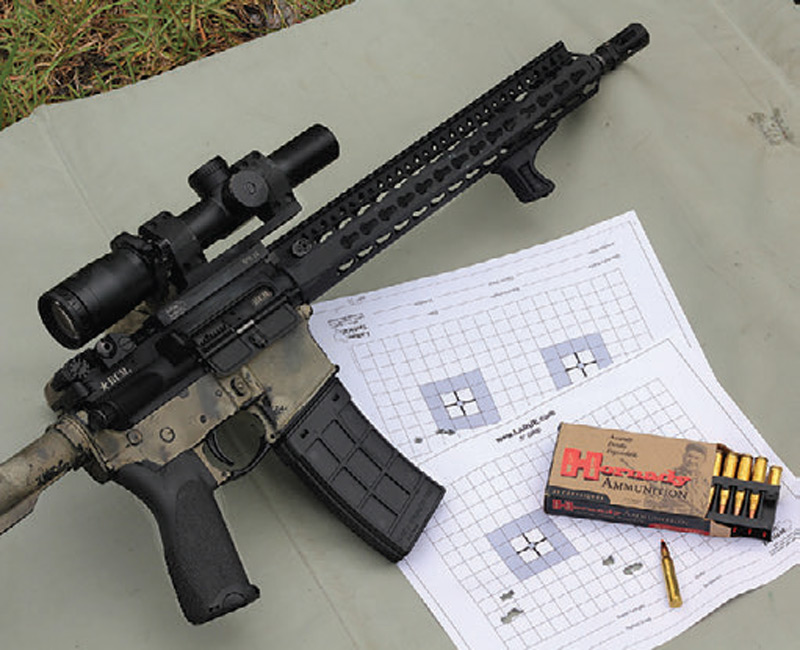
MYTH 2: LIGHTWEIGHT BARRELS DON’T SHOOT WELL
This may have been true in a bygone era, but it certainly isn’t today. I’ve fired lightweight barrels from BCM, ROBAR, Noveske, and LaRue that have each been sub-MOA with good ammo. For example, one of the lightest barrels I have is the BCM Extreme Lightweight Fluted with taper profile. The very first group I fired with it put three Black Hills 77s into a no-kidding .49-inch knot at 100 yards.
The astute and critical reader will say, “That is a group in isolation. What about after a long string or a hot fight?” Great question, and I wondered the same.
I took that carbine with the barrel cold and fired a control group that measured just under an inch with Hornady 55-grain V-MAX. I then hopped up and proceeded to shoot a sequence of consecutive six-shot close-range drills, emptying a full magazine in a little over a minute. I reloaded, immediately got back down onto my rest, and carefully fired three more groups within less than two minutes.
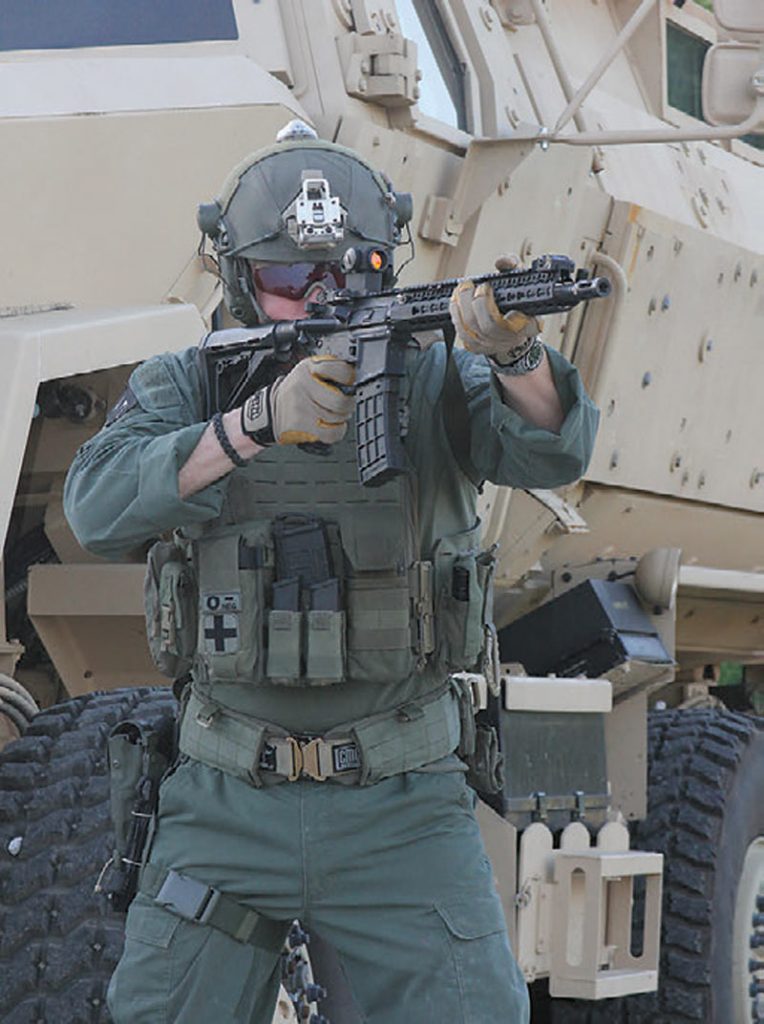
The groups miked out at .95, .72, and .72. Three “hot” groups averaged .80. I think the top-end companies have figured out how to cut weight without sacrificing performance.
OUNCES BUY TIME AND OPTIONS
A shooter gains valuable time on target with every ounce that is cut from the rifle. In the real world, sometimes the gun must be held on target while a decision is made, the situation develops, or while waiting for a threat to reappear. This is where the lightweight rifle begins to earn its keep and develop strong fanboys.
The shooter who wanted the heavy barrel, then the heavy optic, then added a bunch of cool accoutrements to the rifle has a very brief window of time to hold the gun in a state of readiness before muscle fatigue begins to degrade or deny performance.
The difference between the two may only be measured in seconds, but those seconds might be the deciding time.
Light weight also allows options. If a situation or injury forces firing single-handed, the light rifle can be used effectively by most of even the bottom quartile fitness folks. Correspondingly, the typical over-heavy rifle is effective to only the top quartile gym junkies when only one hand is available.
This is an extreme example, but extrapolates out to unconventional positions such as curbside prone and over-the-hood offset, where the rifle is heavily dependent on arm strength for support.
Teddy Roosevelt’s Rough Riders charged up San Juan Hill with 1896 Krags. In the age of carbon-fiber and space-age alloys, shouldn’t yours be at least that light?
